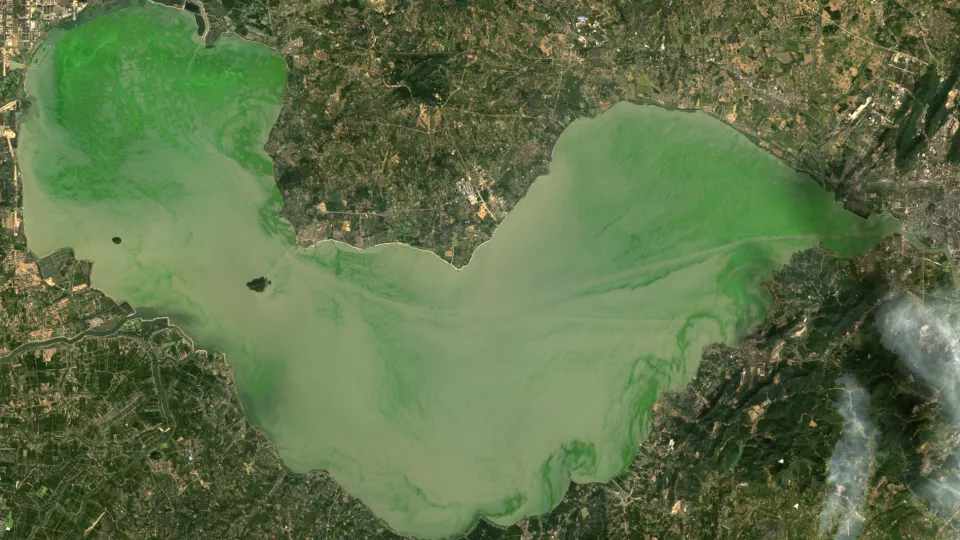Toxic algal blooms in water, known as blue-green algae, is a severe environmental problem in inland waters as it is a threat to humans and animals. In a new study published in Nature Geoscience, scientists have recently put together a comprehensive database of algal blooms on a global scale over the past decades, showing a wide increase since the shift of the millennium.
A useful global bloom dataset
The global database of algal blooms was created from 30 m resolution Landsat satellite images taken between 1982 and 2019. In total almost 3 million images, covering 57.1 % of global lake areas, were used. By developing a colour-based algorithm the research group could characterize patterns in freshwater lake algal blooms globally and investigate the geographic and temporal patterns of the algal blooms.
– The algorithm we developed that can identify green algal blooms by their colors in satellite images, and the global bloom dataset (GBD), can be used for many other studies to analyze potential linkages and impacts of algal blooms to human health, fishery, economy and tourism, on such, says Jing Tang, affiliated to the department of Physical Geography and Ecosystem Science at Lund University.
Dramatic change due to human activities
Data was evaluated to get a picture of the change globally and regionally over the decades. The result shows that during the 1980s up to the shift of the millenium, there were no significant changes of algal bloom at global lakes. Then something happened: From the 2000s to the 2010s, the global median frequence of algal blooms increased by 44 precent.
– We found lakes worldwide have been experiencing increased extents and frequencies of algal bloom occurrence over the past four decades, with a particular increase in the 2010s. We identified that the greatest increases of algal blooms mainly focus in developing countries due to high levels of fertilizer usage and rapid urbanization and industrialization. Together with climate change, this might add another level of concerns in these regions to secure food demands and to pursue economic development, says Jing Tang.
Increased use of fertilisers
From the 1980s to the 2010s, the increase of phosphate and nitrogen fertilisers globally were as high as 54.8 and 53.0 %, respectively. There are some differences between continents, where Asia and Africa show a significant increase in use of fertilisers which are mirrored in the algal bloom occurence.
– We expected to see the increase of algal blooms in regions, like Asia and Africa, based on our previous study at local sites and this has been confirmed in our global study. However, we also see a wide increase of algal blooms in many other regions. A total of 8.8% of the examined lakes have experienced algal blooms at some time between 1982 and 2019. The only region that did not see this increase is Oceania. This phenomena might not only be associated with increased fertilizer usage, but also be linked to global warming. Warmer water can lead to more algal bloom outbreaks, explains Jing Tang.
Scientists warn that these algal blooms will likely appear more often in the future, due to a warmer climate, as algal bloom growths are sensitive to temperature rise. Severeal mechanisms coupled to global warming, such as less water mixing and more sunlight absorption by algal blooms, may further boost the toxic blooms.



